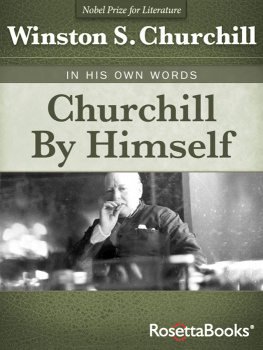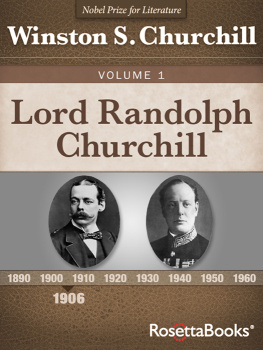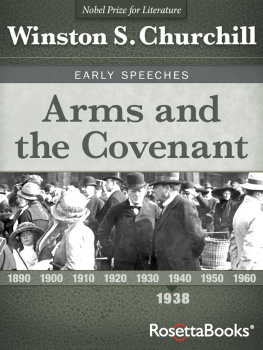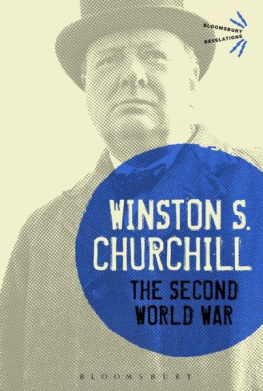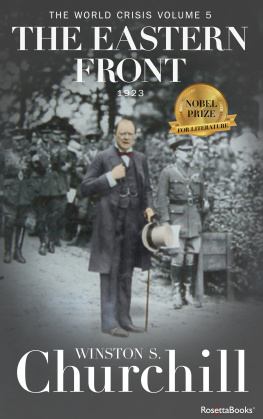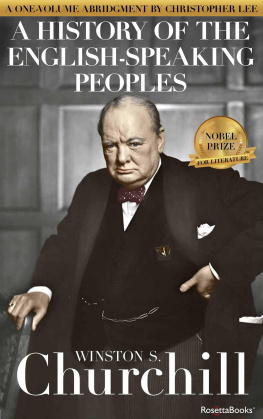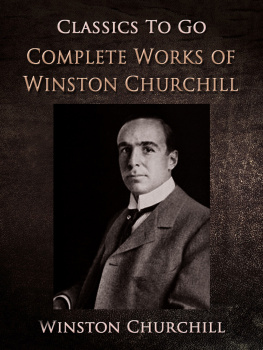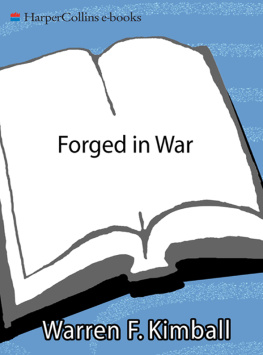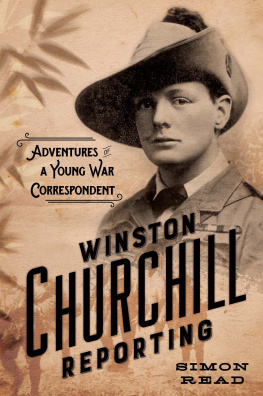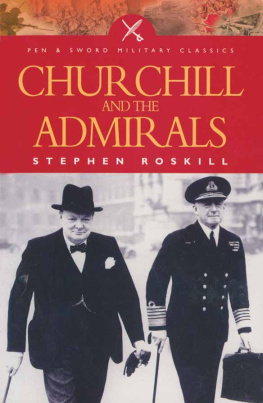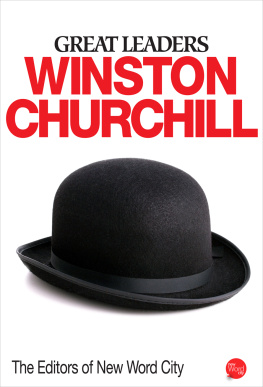Copyright
The Peoples Rights
First published in 1909. Speeches Estate of Winston S. Churchill. Introduction 1970 by Flaxton Mill House Pty Ltd.
Cover art to the electronic edition copyright 2013 by RosettaBooks, LLC.
All rights reserved. No part of this book may be used or reproduced in any form or by any electronic or mechanical means, including information storage and retrieval systems, without permission in writing from the copyright owner, except by a reviewer who may quote brief passages in a review.
Image of Winston Churchill addressing voters reproduced by permission of Curtis Brown, London, on behalf of The Broadwater Collection, an archive of photographs owned by the Churchill family and held at the Churchill Archives Centre, Cambridge.
Electronic edition published 2013 by RosettaBooks, LLC, New York.
Cover jacket design by Alexia Garaventa
ISBN e-Pub edition: 9780795330346
We are going into battle.
Let us stand together like comrades and brothers.
The issues are very simple, but they are very great.
We have to drive the Budget through.
We have to smash the veto up, and if we march together
there is none that can withstand us.
INTRODUCTION
The Peoples Rights was compiled and published at great speed in the last weeks of 1909. It was designed, as the author explained, as a guide for some and as an armoury for others in the general election campaign which followed the rejection of the 1909 Budget by the Conservative majority in the House of Lords. Winston Churchills agreement with Messrs Hodder and Stoughton specified that two editions of the work, originally entitled The Peoples Rights Defended, would be published. For the cheap edition, to be sold at one shilling, Churchill was guaranteed a ten per cent royalty; on the two-shilling edition he was to receive fifteen per cent. An advance of one hundred pounds was paid on the signature of the contract. The first copies of the book reached the bookstalls in the second week of January 1910 and were quickly sold. There was no reprint; and in 1969 sixty pounds was paid for a second-hand copy in good condition.
Churchill distilled the six chapters of The Peoples Rights from a series of brilliant speeches, most of them delivered in Lancashire in the first fortnight of December 1909. The last of the speeches was delivered on December 12th. Four days later, J. E. Hodder-Williams, the chairman of Hodder and Stoughton, wrote to Churchill:
As you suggested, we are making up the book into page form. The printers have been most careful, and have suggested various deletions of repeated matter, so I think you can safely leave it in our hands, but of course I am sending you page proofs as soon as possible.
Neither the printers vigilance, nor Churchills own scrutiny of the proofs, removed all the repetitive passages: occasional references to particular audiences and occasions survived, and are reproduced in this edition. Many sections retain the characteristic flavour of platform rhetoric. But, hurried and imperfect though it was, the book was a powerful plea for both constitutional reform and a great policy of social reconstruction and reorganization.
What gave the book its strength? First, the careful preparation on which its economic arguments were based. Two weeks before he began the Lancashire tour, Churchill addressed a memorandum to the Commercial Department of his ministry, the Board of Trade:
- I am going to speak in Lancashire from the 2nd to the 12th December, visiting Manchester, Preston, Southport, Liverpool, Bolton, Burnley, Oldham, Crewe and perhaps Wirral. Please let me have a note on the trade and labour conditions in each of these towns, the special industries, their state at the present time, new industries or mills recently started, and any other matter which may strike you as likely to be useful to me.
- Prepare me some statistics dealing with the British and German cotton industries, showing their respective size, exports to protected and neutral markets, growth by value, by bulk and by spindles, etc.
- Let me have a short note on the trade of Lancashire as a whole.
- Compare the trade activity of Lancashire, exports, imports, etc., per head of the population with the trade activity of great protected countries.
- If an average 10 per cent were imposed on imports of foreign manufacturers mention what articles or categories of articles would be included in schedules which are used in the cotton industry. To what extent are flour and leather used?
This will not be wanted until the middle of next week.
In answer to the President of the Board of Trades precise and comprehensive requests, his officials supplied a formidable brief. Churchill digested the inch-thick file of statistics and analysis, and laced his speeches with apposite calculations and examples. However, it was not the thorough verification of his defence of free trade that most distinguished Churchills case. Other Liberal oratorsAlexander Ure and Russell Rea, for examplewere equally versed in the traditional radical arguments and their statistical proofs. Churchills unique contribution was the blending of hallowed precepts with new and optimistic proposals for managing the economy and improving the peoples welfare. Rejecting gloomy orthodoxy on unemployment, for example, he argued:
There is nothing economically unsound in increasing temporarily and artificially the demand for labour during a period of temporary and artificial contraction. There is a plain need of some averaging machinery to regulate and even-up the general course of the labour market, in the same way as the Bank of England, by its bank rate, regulates and corrects the flow of business enterprise. When the extent of the depression is foreseen, the extent of the relief should also be determined.
Twenty years before the onset of the great depression, and thirty years before the idea of counter-cyclical public expenditure had achieved any significant measure of acceptance, Churchill here appealed for a concerted effort to reduce the oscillation of the industrial system. There were many to applaud his phrases, none yet to translate them into reality.
Soon after composing these words, Churchill left the Board of Trade for the Home Office, where fresh responsibilities soon dominated his attention. He had first publicly outlined his ideas on combating unemployment in October 1908 at Dundee. Eight months later he presented a tentative, but detailed, plan to the Chancellor of the Exchequer, David Lloyd George. No evidence of Lloyd Georges response to Churchills proposals has survived. There is no reason to suppose that he would have been less than enthusiastic. But, in Churchills scheme, the functions of gathering information and forecasting the scale of unemployment were assigned to the Board of Trade. And Churchills successor as President, Sidney Buxton, lacked both the stature and acumen to carry through so daring a proposal, even if he had supported it.
The occasion which prompted the publication of The Peoples Rights is one of the best-known episodes in British political history. Since 1906 the Liberal Government had been frustrated by a hostile majority in the Upper House. Licensing, Education, and Scottish Smallholding Bills had foundered in the Lords. Legislation to abolish plural voting was also blocked. But not until the rejection of the Budget of 1909 did the Government find an issue on which to fight. Who was to rule? Six hundred Lords or six million voters? That was the question that was put to the voters who were forced to the polls because of the denial of supplies to the Crown.


